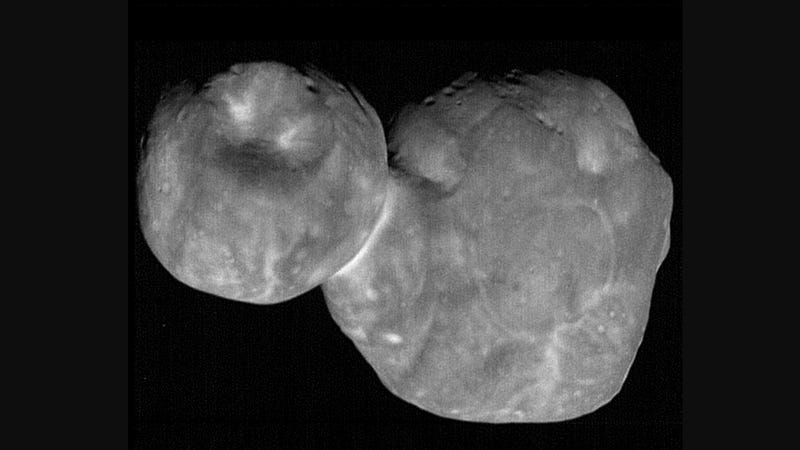
Following our first good look at 2014 MU69 back in January, New Horizons has beamed back its crispest shots of the distant space object yet. The images have a resolution of resolution of roughly 110 feet per pixel, delivering on one of the mission’s challenging goals for observing the object nicknamed Ultima Thule.
“Getting these images required us to know precisely where both tiny Ultima and New Horizons were—moment by moment—as they passed one another at over 32,000 miles per hour in the dim light of the Kuiper Belt, a billion miles beyond Pluto,” Alan Stern of the Southwest Research Institute and New Horizons Principal Investigator said in a statement. “This was a much tougher observation than anything we had attempted in our 2015 Pluto flyby.”
Nearly a month after its historic New Year’s Day flyby, NASA’s New Horizons spacecraft returned its clearest shot of the Kuiper Belt object. But these new images, captured with the spacecraft’s Long Range Reconnaissance Imager (LORRI), provide even more detail. Stern noted that some of these observed surface features “we now see on Ultima Thule’s surface are unlike any object ever explored before.”
As NASA noted, those include both areas of both “circular patches of terrain” as well as curious pits, the cause of which appears to be of some debate among the New Horizons team. John Spencer, deputy project scientist with the Southwest Research Institute, said that mission scientists are split on whether they’re “craters produced by impactors, sublimation pits, collapse pits, or something entirely different.”
Advertisement
It will take many months for New Horizons to return all of its data on this object located more than 4 billion miles from Earth. And there’s still much to discover about the distant world. Earlier this month, for example, exciting images appeared to show that MU69’s lobes are much flatter than scientists had anticipated.
“While the very nature of a fast flyby in some ways limits how well we can determine the true shape of Ultima Thule, the new results clearly show that Ultima and Thule are much flatter than originally believed, and much flatter than expected,” Hal Weaver, New Horizons project scientist from the Johns Hopkins Applied Physics Laboratory, said in a statement at the time. “This will undoubtedly motivate new theories of planetesimal formation in the early solar system.”
[NASA]
Advertisement
Bagikan Berita Ini















0 Response to "New Horizons Beams Back Its Clearest Images of Ultima Thule Yet - Gizmodo"
Post a Comment